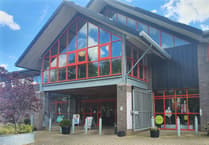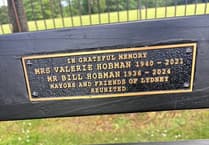A NEW book is set to reveal the story behind a hidden historical jewel of the Wye Valley, which has close links to Henry VII and the Tudor dynasty.
Troy House: A Tudor Estate Across Time by Ann Benson was launched last week at the Shire Hall in Monmouth.
And in her book, the history consultant for Oxford’s esteemed Bodleian Library tells the tale of a barely glimpsed Wyeside mansion, hidden among trees down a farm track on the outskirts of the town.
The current building dates back to the 1680s, but the history of the site stretches back much further.
Henry VII was reputedly a visitor to the original building in 1502 and its owner Lady Blanche of Troy later became part of Henry VIII’s royal court as ‘Lady Mistress’, responsible for the upbringing of his children, the future King Edward VI, Queen Mary and Queen Elizabeth I.
She was married to Sir William Herbert of Troy Parva, an illegitimate son of William Herbert, 1st Earl of Pembroke, the owner of Raglan Castle where the future Henry VII was brought up as a child.
And Welsh bard Lewys Morgannwg in her funeral elegy wrote that ‘the Lady of the palace of Troy’ had hosted the monarch at her home in August 1502.
The current building was constructed from 1681 to 1684 as a wedding present for Charles Somerset, the Marquess of Worcester, by his father Henry Somerset, 1st Duke of Beaufort as a wedding present.
In the 20th Century, it was used as a convent and then an approved school. It is currently privately owned, but parts have fallen into disrepair.
Plans have been put forward to convert part of the building into apartments, and 18 months ago Monmouthshire Council agreed to spend £9,000 on a protected species survey pending an application.
The architectural history of Troy House is positioned at the centre of Ann Benson’s book, which reveals “previously unrecorded historical features about the building and its landscape”.
She is a writer and lecturer on garden and architectural history specialising in the Tudor and Stuart periods who taught at the Institute of Historical Research and now gives talks to national bodies.
Her research shows it to be “a rare surviving example of a complete Tudor estate with Jacobean and Carolean aggrandisement, giving Troy House a significant place in history”.
The book is published by the University of Wales Press.





Comments
This article has no comments yet. Be the first to leave a comment.